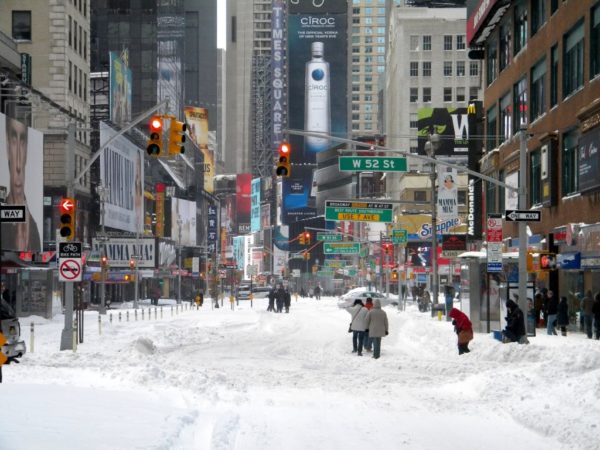 Temperatures dropped to record lows across the United States this week, resulting in injuries and even death. Since storm Hercules plagued the Northeast and Midwest, the weather has been blamed for at least 20 deaths, USA Today reported.
Temperatures dropped to record lows across the United States this week, resulting in injuries and even death. Since storm Hercules plagued the Northeast and Midwest, the weather has been blamed for at least 20 deaths, USA Today reported.Countless other people may have suffered severe injuries from the snow and ice, from falls to hypothermia. Here are some tips to stay healthy and safe during dangerous weather.
- Eat a balanced meal before going outside. The process of breaking down meals can spur thermogenesis, the production of heat in the body. Also, avoid alcohol or tobacco as they can affect heat retention.
- Drinking water will help the body fight off the cold. During extreme weather, the body expends a lot of energy to stay warm through shivering or thermogenesis.
- Layering clothing will insulate you and help keep the heat “in.” Layer loosely and don’t wear restrictive clothing that could affect circulation.
- Protect the extremities as they are at greater risk of frostbite. In times of extreme cold, the body will reserve heat to the torso to protect vital organs. Wear an extra pair of socks, and choose mittens instead of gloves because fingers stay warmer when next to each other.
- Wear winter boots, not Uggs! Choose a boot that is well insulated and has treads on the bottom that provide traction on ice and snow.
- Put on a hat — Although this seems like a natural choice, often it is not. About 30 percent of body heat can be lost through the head. Cover the nose and cheeks also, as these areas are more susceptible to frostbite.
- Stay dry — Wet clothes are no longer efficient at retaining body heat. In fact, wet skin will chill more rapidly and raise the risk for frostbite or hypothermia.
Below are the signs of frostbite, according to the Mayo Clinic:
- A slightly painful, prickly or itching sensation
- Red, white, pale or grayish-yellow skin
- Hard or waxy-looking skin
- A cold or burning feeling
- Numbness
- Clumsiness, due to joint and muscle stiffness
- Blistering, in severe cases
If any of these are happening to the skin, warm the area slowly (such as sticking fingers underneath one’s armpit). Never rub or use artificial heaters as they may cause more damage to the area.
Symptoms of hypothermia include:
- Shivering
- Slurred speech
- Abnormally slow breathing
- Cold, pale skin
- Loss of coordination
- Fatigue, lethargy or apathy
- Confusion or memory loss
- Bright red, cold skin (infants)
These symptoms usually develop slowly, and someone experiencing hypothermia should receive medical assistance immediately and take these steps:
- Move someplace warmer (or indoors)
- Remove wet clothing, if any
- Do not apply direct heat, such as pads or hot water; warming should be gradual
- Do not rub or massage the skin
- Drink only warm broth or non-alcoholic and non-caffeinated beverages, unless the person is vomiting
Knowing the signs can help protect you and your loved ones if there is an emergency, but doctors say the best treatment is prevention.
Cleveland Clinic emergency physician Seth Podolsky said on NPR, “Prevention really is key, the more time and the more skin exposed, the worse it is.”
S.C. Rhyne is a blogger and novelist in New York City. Follow the author on twitter @ReporterandGirl or on Facebook.com/TheReporterandTheGirl and visit her website at www.SCRhyne.com


